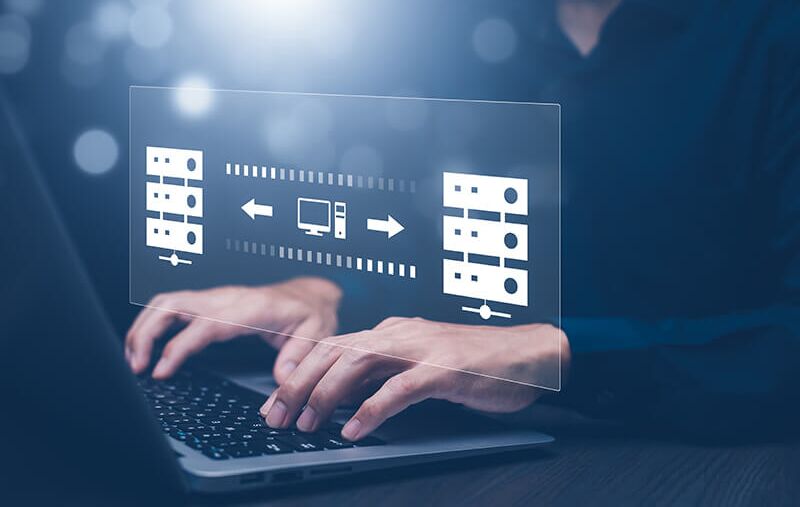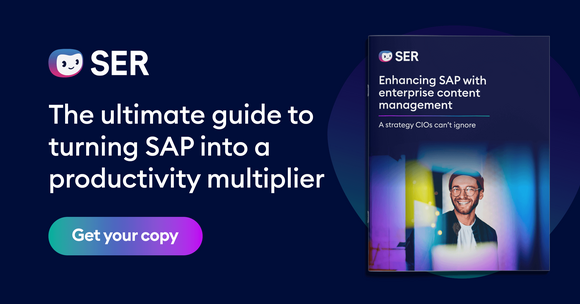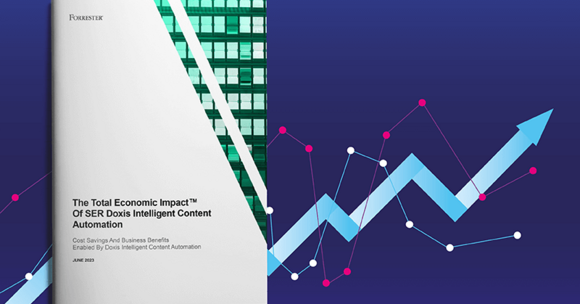SER Blog Customer Stories & Use Cases
Global document-sharing: The secrets to securely exchanging eInvoices and sensitive data
With companies constantly exchanging invoices, contracts, delivery notes, plus legions of other documents and sensitive data, file sharing needs to be efficient — that’s a no-brainer — but more importantly, it must be secure and legally compliant. This can be problematic for many companies, since the legal standards on financial transactions often vary from country to country. Take the variety of different national eInvoicing requirements, for instance. In the absence of compatible connectors between systems, the user experience becomes disjointed, resulting in delays and potentially exposing companies to legal risks.
With Doxis eDocument Exchange, you create a frictionless purchase-to-pay (P2P) process landscape that is both efficient and compliant. Keep reading to discover how to ensure your international inbound invoice processes conform to legal requirements.

Uploading and sharing documents: The challenges in international P2P processes
These days, most companies use DMS, ERP, CRM, or similar systems for uploading and sharing documents. In P2P processes, documents can range from offers to orders, delivery notes, invoices and more. While the tools have pretty much mastered standardized document processes on a national level, things get more complex on an international scale. The number of requirements that companies must adhere to from country to country is on the rise and not getting any simpler.
Cross-border compatibility
Companies that need to exchange documents electronically across borders must comply with a variety of cross-border requirements on formatting and transmission. Like electronic invoices, or eInvoices for short, which are subject to binding standards in different countries. Take Germany, of instance. Their standardized format for eInvoices is ZUGFeRD or XRechnung — and are already mandatory for B2G transactions, with mandatory B2B invoice receipt obligations set to come in from 2025. By contrast, other countries only accept one or the other format or specify alternatives such as Factur-X, the French equivalent of ZUGFeRD, or EFattura in Italy. Where systems do not support other formats, interruptions in the user experience ensue.
Obligation to use a platform
On top of formatting rules, several countries also require businesses to use official government-approved platforms to send or receive eInvoices — especially in the public sector. For example, Peppol is a widely adopted standard across Europe for secure, cross-border eInvoicing and procurement.
Government platforms like Peppol provide the legal basis for securely sending and receiving eInvoices internationally. They:
- Standardize document channels in the B2G and B2B sectors,
- enable secure transmission, and
- support interoperability.
But companies first have to connect their systems to these platforms — which is where using a certified tool is a must. Transmissions from uncertified systems are not accepted.
Good to know: Germany is the only country to have introduced an eInvoicing mandate without an obligation to use a specific government portal.
Fragmented processes
With multiple different platforms and interfaces in play, heavily fragmented P2P processes are inevitable and frustrate efforts to create cross-border document processes (creating, editing, sending, posting, archiving) that flow smoothly and without interruption. In turn, unstandardized processes become error-prone. Inbound documents are filed in the wrong folder, larger files go missing, processing delays ensue... The list goes on.
How does legally compliant document exchange work on a global level?
The key to future-proofing your financial transactions lies in certified interfaces to government portals, such as the certified software Doxis eDocument Exchange — a new invoice management solution designed for companies that need to send and receive eInvoices across borders. It’s certified to connect with government-mandated platforms like Peppol, which is used in many European countries for public procurement. By integrating with these portals, the system ensures that your invoices meet national requirements and can be securely transmitted and processed.
Invoice-sharing via certified interfaces
With Doxis, you receive and process eInvoices from global business partners compliantly and in line with data protection requirements. Here are the advantages and functions at a glance:
- Ready out of the box: Complies with the respective technical standards and mandatory invoice formats
- Always up to date: Continually adapts processes to legal changes and adds countries as they transition to eInvoicing (currently accepts invoices from 30 countries)
- Process automation: Receives inbound eInvoices in real time and seamlessly integrates into existing processes
- End-to-end communication: Automatically sends confirmations of receipt to senders
- Protected information: Guarantees protected transmission channels for eInvoices and other information

The ultimate guide to global eInvoice mandates
Gain critical knowledge on the data transfer platforms and eInvoicing formats of countries across the world, including upcoming changes.
Read nowInbound invoice processing with Doxis: How it works
Doxis empowers you to build integrated inbound invoice processes. Here’s a step-by-step guide to electronic invoice processing in Doxis:
Step 1: Accept inbound invoices
Doxis independently accesses the digital inbox via special interfaces to fetch inbound eInvoices. For instance, it connects to Peppol and automatically accepts eInvoices from the platform.
Step 2: Capture document data
Doxis supports common eInvoice formats, meaning you can more easily conduct international business deals with nations using Factur-X, XRechnung, and eFattura, as well as PDF documents and other file types. It sends the contents of the invoices to the system as structured data, using keywords to figure out the document type. An invoice from supplier X is automatically stored by Doxis in the associated supplier eFile.
Good to know: Doxis accepts all kinds of invoices — both with and without a purchase order reference, as well as single, partial, and final invoices.
Step 3: Verify invoices
Doxis performs both a formal and factual check of incoming invoices and immediately flags missing or erroneous information for review. This is made possible, for instance, by comparing the invoice with previous documents in the P2P process, such as the order confirmation or delivery note. Doxis then sends validated invoice data to your ERP system in the correct format.
Step 4: Release file
Once eInvoices are validated, Doxis launches the release workflow, assigning an “invoice release” task to a competent user. Users can also set up multi-stage release processes and delegation and deputy rules to keep releases flowing smoothly with zero backlogs. The multi-stage option can play a crucial role in safeguarding compliance with internal regulations. It also enhances security within the process.
Step 5: Post payment
After release, Doxis sends posting-relevant data from the eInvoice to your accounting system for settlement. You can even implement automatic posting for eInvoices with a purchase order reference.
Step 6: Archive the document
Last but not least, Doxis archives the eInvoices in line with regulatory and audit requirements. In other words, Doxis makes sure that eInvoices and other sensitive documents are filed traceably, securely, and protected from tampering. Access privileges permit access to authorized individuals while protecting the content from prying eyes, ensuring that documents remain safely stored over their retention periods.
How certified document exchange interfaces help automate P2P processes
If you're dealing with eInvoices across borders, staying compliant can get complicated fast. The easiest way to keep things running without disruption? Use a certified interface that connects directly to government portals, like Doxis eDocument Exchange.
It’s built to meet eInvoicing rules in over 30 countries and automatically keeps up with legal changes, so you don’t have to. That means your purchase-to-pay processes stay secure, efficient, and fully compliant, from receiving the invoice to posting it, no matter the format or system. No manual fixes. No missed regulations. Just smooth, automated invoice handling from start to finish.
Want to see it in action? Reach out for a free, no-oglibation demo today. Our experts will be in touch!
FAQs on document exchange
The latest digitization trends, laws and guidelines, and helpful tips straight to your inbox: Subscribe to our newsletter.
How can we help you?
+49 (0) 30 498582-0Your message has reached us!
We appreciate your interest and will get back to you shortly.




